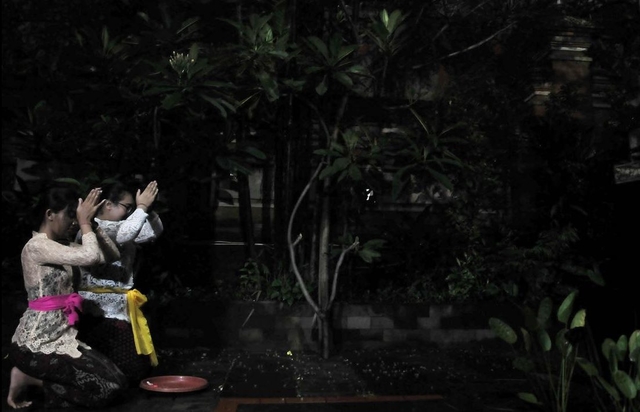
Bali Hindus celebrate holidays associated with full moon and new moon. These are Purnama and Tilem.
On the day of the full moon, Hindus worship Sang Hyang Chandra, the moon. And during the Tilem festival, they worship Sang Hyang Surya, the sun.
Both the sun and the moon are considered manifestations of the supreme god Sang Hyang Widhi Wasa, who melts away all impurities. In both Tilem and Purnama, Balinese people conduct prayer ceremonies with a series of special rituals.
In Balinese Hinduism, there's a concept known as "rwa bhineda," which means two different (opposite) things. Everything that exists in this world has the nature of rwa bhineda, two things that are distinct, contradictory, yet interconnected.
Their existence can support or be necessary for each other. This concept applies to natural phenomena.
One of them is the natural condition when the moon shines fully on the day of Purnama (full moon), or when the moon reflects no light during Tilem (new moon).
In Hindu mythology, the Moon is called Deva Chandra. Deva Chandra rules over Monday. Thus, a child born on a Monday is often named Chandra, Vulan, or Bulan (from the word "bulan" - month) to ensure the protection of Deva Chandra.
Hindu legends say that Deva Chandra was cursed for being unfair to his wives. The wives of Lord Chandra were the daughters of Prajapati Daksha.
To help Deva Chandra avoid this curse, Lord Shiva blessed him that for a month, Chandra would live and shine (during the full moon) but once in the month, he would die, losing his radiance (during the new moon).
During Tilem, Balinese people usually pray at the village temple in the second half of the day.
Tilem is considered a special day for purifying the inner self and eliminating all impurities within a person.
Tilem hosts significant ceremonies such as Tawur Kesanga or Shivaratri, as well as Eka Dasa Rudra, which is observed once every 100 years.
You can add one right now!